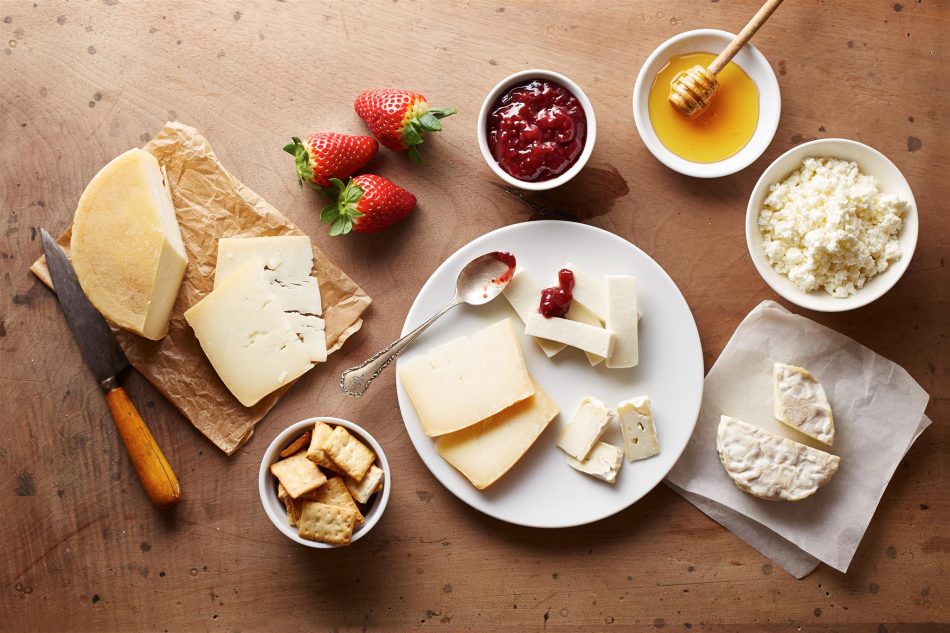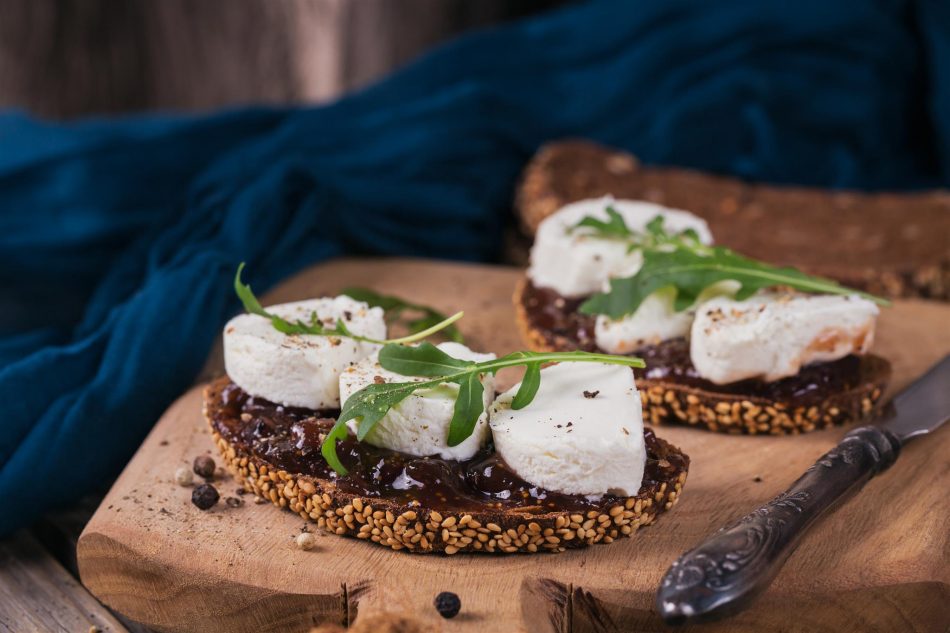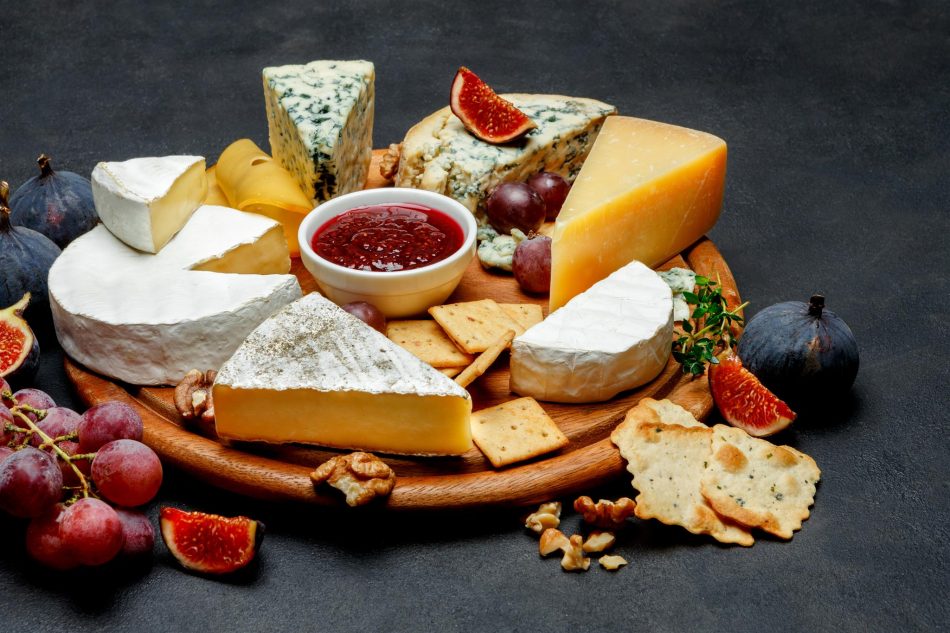Jams and cheeses
Contents:
- Why cheese matches so well with marmalade?
- Which jams do we pair with cheeses?
- How to arrange and serve a board of cheeses and jams
Jams and cheeses: 2 elements far apart from each other, however they are one of the most surprising pairings to taste an unconventional meal. Pairing cheeses, marmalades and jams is not that easy though: there are some basic rules to enhance every taste and flavour.
Here for you our suggestions to arrange a perfect board with cheeses, jams and marmalades to share during a lunch or a dinner with friends.
Why cheese matches so well with marmalade?
Cheese and jam pairing belongs to the classic dishes from the Italian culture: but how can it be possible that such different elements can go perfectly together? The answer is simple: they are complementary.
Cheeses have no sugar and they find the perfect element for balancing their flavour in the sweetness of jams, marmalades, jellies, honeys and mostarda. Every kind of cheese has its compote to create the perfect balance of taste and flavour.

Which jams do we pair with cheeses?
How do we choose the right jam for a cheese? First of all, consider the composition of the product, especially the milk it is made of: the intensity of a cheese flavour changes a lot depending on the milk, whether it is cow, sheep or goat’s milk. The same is for its consistency: fresh or soft cheeses are normally sweeter; the semi-mature and mature cheeses have a stronger flavour instead.
In order to respect the basic rule about pairings, namely balance, mature and savoury cheeses need to be paired with a sweeter accompaniment: jams are perfect indeed. The most famous are undoubtedly those jams made with pears, plums or cherries, but you must try also those jams made with raspberries, fruits of the forest, strawberries and apricots.
Fresh cheeses, soft and sweet are traditionally accompanied by jams and marmalades with a sour taste: tangerine, lemon and orange jams are recommended to try ricotta and robiola in an unusual way. Lately, the pairings enhancing the affinity between elements are becoming more and more appreciated for the fresh cheeses: to try a whole new taste we suggest burrata and strawberries jam.
Let’s see in detail which are the best pairings for cheeses.
Pear jam and mature and marbled cheeses
Pear jam matches perfectly with mature cheeses such as Parmigiano Reggiano and Pecorino from Pienza, and with some marbled cheeses such as Gorgonzola and Roquefort.
Fig jam and soft cheeses
Fig jam and its spicy taste can be paired with goat’s fresh cheeses, such as Camembert and Brie.

Peach jam and cheeses with an intense flavour
Very sweet and tasty, peach jam matches with spicy cheeses or with the marbled ones, such as Pecorino from Sardinia, Formaggio di Fossa or Gorgonzola.
Fruit of the forest jam for surprising pairing
Fruit of the forest jam is very versatile, and it can be paired – following the rule of contrast – with savoury cheeses, such as Bra duro and Piave Vecchio, but also with fresh cheeses such as ricotta and robiola to obtain a pairing that plays with the affinity between flavours.
Orange jam and fresh cheeses
A very traditional pairing is the one between orange jam, with its sour taste, and fresh cheeses with a soft texture and a sweet flavour: ricotta, Camembert and mascarpone.
Lemon jam
Lemon jam too matches perfectly with fresh cheeses with soft texture. We suggest in particular to pair this jam with ricotta, burrata, mascarpone and fresh robiola.
How to arrange and serve a board of cheeses and jams
An unconventional dinner or a refined appetizer with cheeses and jam? Whichever the occasion is, once you know the pairings and you choose the ones you prefer, you just need to learn how to prepare the classic board of mixed cheeses and jams.

Which are the basic rules to follow in order to create a perfect board?
- Normally you need to choose at least 5 different types of cheese, one per milk type and with a different length of aging.
- Cheeses must be served at room temperature: depending on the cheese ripening take the cheeses out of the fridge one or two hours earlier than the moment you will eat them.
- While composing your board you should arrange the different cheeses in a clockwise manner. This means that there is a specific starting point for the tasting, and an ending point: normally you should start from the most delicate cheese, often with a soft texture, to get to the most intense and mature ones.
- Each cheese needs to be cut in an appropriate way: this will allow you to taste its flavour in the best way. Semi-mature cheeses must be cut in triangular pieces, the mature ones with a grainy texture, such as Parmigiano Reggiano, must but cut in Sheep’s milk cheeses and goat’s milk ones must be served in slices, the softer ones should be spread: arrange on the board the whole fresh ricotta and robiola and make available for your guests some appropriate knives to spread them.
- Every cheese on the board will have its own jam or marmalade: each one of them will have its bowl and its spoon in order for every guest to take its part.
- Cheeses, jams and marmalades must be served with homemade bread: cut the bread in slices and arrange them in small baskets to accompany the board.

